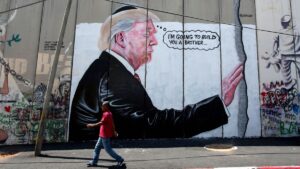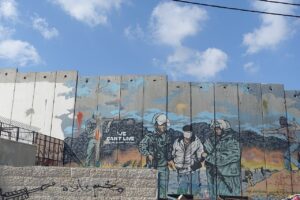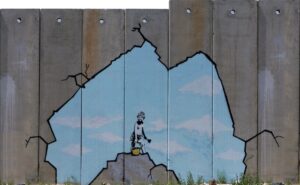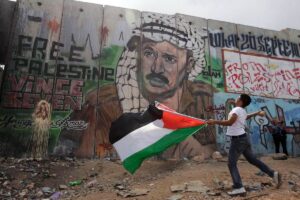Walls That Speak: Palestinian Street Art as a Form of Resistance
Walls That Speak: Palestinian Street Art as a Form of Resistance
Graffiti and street art have long been the visual language of marginalized voices. From the boroughs of New York to the alleys of Berlin and the streets of Bethlehem, artists have transformed public walls into canvases of truth — reflecting everyday struggles, dreams, and resistance.

The Berlin Wall became a global symbol of division and oppression. Its western side, vibrant with graffiti, was seen as a statement of freedom by the West, while the eastern face remained bare — a stark reminder of censorship and authoritarianism.

Palestinians live with their own towering barriers. The West Bank Wall and the so-called Iron Wall are built by the Israeli state — stretching over 700 kilometers through Palestinian territory. Israel labels them as “security barriers,” but for Palestinians, they represent an architecture of apartheid. These 30-foot-high concrete walls, lined with barbed wire, cut deep into their land, their lives, and their freedoms.
On the Palestinian side, however, these gray walls are anything but silent. Covered in bold graffiti, they echo a people’s refusal to be erased. These are not just artworks — they are messages of endurance, identity, protest, and hope. In contrast, the Israeli side of the wall remains eerily blank, a visual void reminiscent of repressive regimes where silence is enforced.

The United Nations has deemed these walls illegal under international law, citing their restriction of Palestinian movement and access to essential services. According to UN reports, there are over 600 movement obstacles in the West Bank alone — many of which isolate families from their land, schools, and healthcare.

Yet despite this daily reality, Palestinian artists continue to reclaim these walls. With paint and spray cans, they transform symbols of division into spaces of collective memory and expression. While international figures like Banksy have drawn attention to the wall — even turning it into a surreal tourist site with his “Walled Off Hotel” — it is the Palestinian artists who carry the emotional and political weight of this visual resistance.

Their work is not meant for postcards. It is not an aesthetic attraction. It is a cry for justice, a reclaiming of space, and a reminder to the world that while borders may be drawn in concrete, dignity and defiance are far harder to contain.

As you explore the imagery on these walls, ask yourself: What does it mean to wake up every day in a walled-in world? To live, generation after generation, beneath the shadow of separation? For many Palestinians, resistance is not a choice — it is a way of surviving, and art is their voice.


50 comments